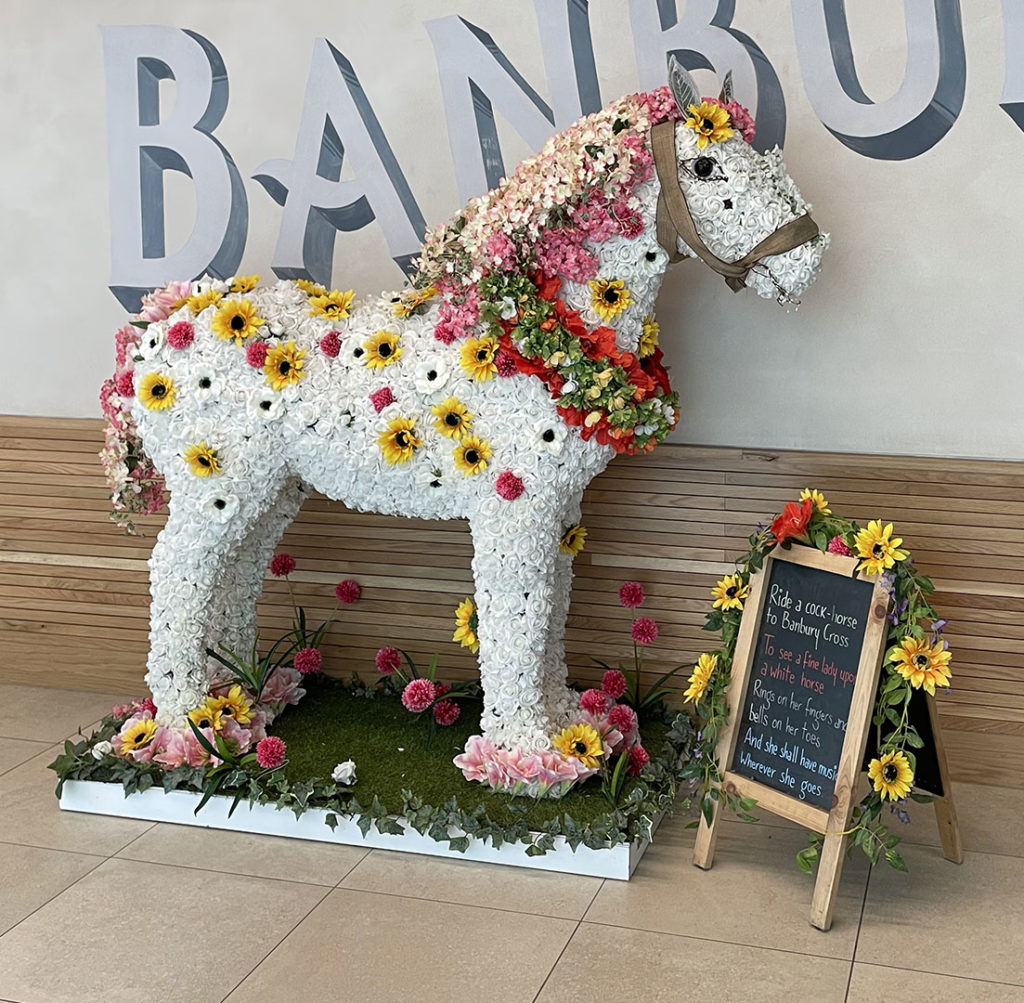The famous Nursery Rhyme ‘Ride a cock-horse to Banbury Cross’ has been enjoyed by children for many generations, however, the origins of the rhyme are still deliberated to this day.
Ride a cock-horse to Banbury Cross,
To see a fine lady upon a white horse;
Rings on her fingers and bells on her toes,
And she shall have music wherever she goes.

Over time there has been several versions of the nursery rhyme with variations on the lyrics, as well as different interpretations of the meaning and theories of its’ origin.
One theory is that the ‘fine lady’ is Celia Feinnes who was born in 1662 and was known for exploring England on horseback. The Feinnes family also have a connection with Broughton Castle where Celia’s brother William, who was a viscount lived.
Other theories suggest that the ‘fine lady’ was Queen Elizabeth I or even Lady Godiva. With rings on her fingers and bells on her toes referring to fine jewellery worn by a Queen or in Lady Godiva’s case the only thing she wore!
The phrase ‘a cock-horse’ was historically used to describe a high-spirited horse and dates back to the 15th century. However, since the sixteenth century it has been used to refer to a toy or pretend horse such as a hobby horse or sitting on an adults’ knee.
Regardless of the uncertainty of who she was, the ‘Fine Lady’ is commemorated by a beautiful bronze statue next to the Banbury Cross.
© 2024 Banbury BID, Ground floor, 1 White Lion Walk, Banbury, Oxon, OX16 5UD
Banbury BID is the official promotional organisation for Banbury town centre aiming to attract and deliver value to businesses and visitors. All content is managed by Banbury BID.
HTML Sitemap - XML Sitemap - Privacy Policy - Cookies - Website by Technique Web